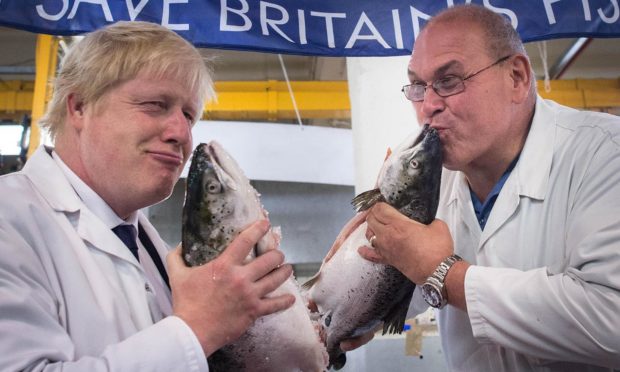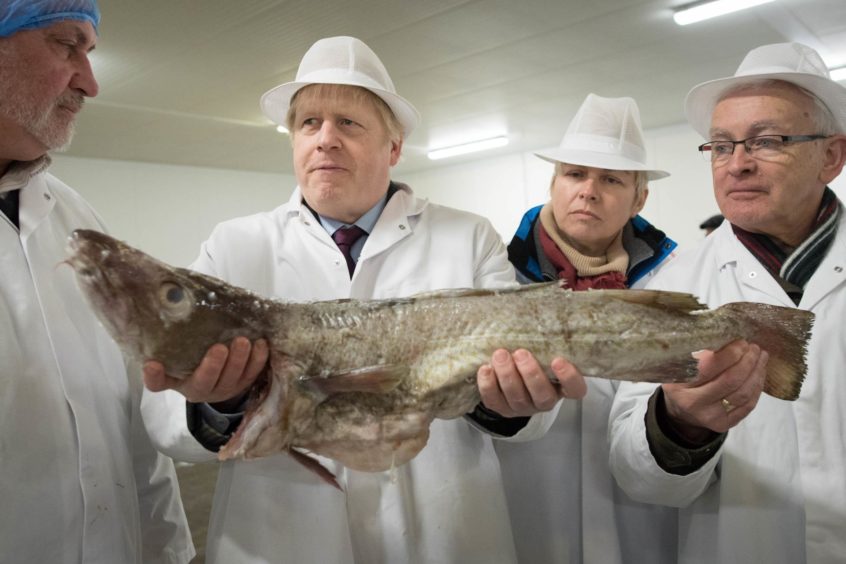Britain becoming an independent coastal state was a central pillar of the Brexit campaign in 2016.
A vote to leave would be a vote to “take back control” of our fishing waters, it would open “a sea of opportunity” for our fishermen and revitalise our struggling coastal communities – or so we were told.
The phrase “sea of opportunity” was dreamed up in 2016 by a former Number 10 spinner for fishing lobbyists and has been used time and time again over the last five years to advance the benefits of Brexit and criticise those who would pursue an alternate course.
With the signing of Boris Johnson’s Christmas Eve trade deal, that phrase has surely now turned to ash in the mouths of all who uttered it.
The prime minister worked incredibly hard to characterise his deal as a “win” for the industry, telling MPs his agreement would see us “take back control of the spectacular marine wealth of Scotland and the rest of the UK”.
But a thousand Johnsonian flourishes won’t cancel the anger and sense of betrayal on this issue.
Fishing communities were promised big things and this deal, according to the industry, falls far short.
“Taking back control” of our waters has effectively been postponed for another five and half years, over which time EU fishermen will have continued access to British waters.
During the five year “transition” 25% of EU boats’ fishing rights in UK waters will be transferred to the UK fishing fleet.
However, half of the 87 fish stocks listed in the deal produce no gain or less than a 1% shift of allowable catch from EU to UK fishermen. Only 13 stocks will produce more than a 5% shift. Indeed, the removal of the ability of EU and UK fishermen to swap quota means that landings of many species, such as cod and haddock, will actually be less than now.
In the Channel, the EU’s share of cod will be going down only from 91% to 90.75%, when it should be on 25% according to zonal attachment.
The industry has been scathing, not just over the detail of the deal, but over Johnson’s “transparent attempt to present the meagre gains as a transformational leap forward”.
“Fishing was used as a poster child for Brexit, but when push came to shove, the Government prioritised other things”, Barrie Deas, chief executive of the National Federation of Fishermen’s Organisations said.
In an attempt to sweeten the pill, the prime minister has pledged £100million to help the industry “take advantage of new opportunities” and, in an oft used ploy, has raised the prospect of jam tomorrow.
“In five and a half years’ time, we will be able to fish every single fish in our waters, if we so choose”, the prime minister told MPs.
After being told in 2016 there would be a major uplift in quota, only to wait five years for a fraction of what was promised, the fishing industry could be forgiven for being a little sceptical about pledges to revisit the issue in 2026.
What the prime minister also forgot to mention is that, while yes the UK has the right to completely withdraw EU boats’ access to UK waters in 2026, the EU could also then impose retaliatory tariffs on exports. The UK Government has agreed this deal precisely to avoid such tariffs, so it’s a hard sell telling folk they will have a change of heart in a couple of years and agree to such tariffs to increase quota.
Some will argue that this deal is a good compromise – sure it might not give one section of the fishing industry what was promised, but for fish producers and exporters it keeps the vital EU market open and allows trade to flow.
The BREXIT shit show , first time in 9 years we have been stopped from exporting to the EU , this should be a national embarrassment, NO benefits what so ever of leaving EU @FergusEwingMSP @Feorlean @scotgov @ScotGovFM @BorisJohnson @michaelgove @SeafoodScotland @scotfoodjames pic.twitter.com/YtM7T2jlQ6
— Lochfyne langoustines Ltd & Lochfyne seafarms Ltd (@LochfyneLangous) January 4, 2021
But, even in these very early days of Brexit, there are already problems. There have been reports of shellfish producers on the west coast being unable to export due to confusion over export health certificates.
And what of the often forgotten group, the inshore fleet who rely so much on EU workers. Despite many pleas from skippers to place deckhands on the UK’s shortage occupation list, the Home Office has refused – telling the industry to recruit local. Anyone with any knowledge of the industry will know what an impossible ask this is.
Brexit sought to package the fishing industry as one group. That was never so – there were always competing interests, whether that be English vs Scottish, white fish vs pelagic, deep-sea fishing vs inshore fishing and fishers vs processors. Make no mistake, Johnson’s ill-fated “sea of opportunity” has finally united this group, in anger.
Dan O’Donoghue is the Press and Journal’s political correspondent at Westminster

